Post Rice Lofts on:
[Wikipedia]
[Google]
[Amazon]
The Rice, formerly the Rice Hotel, is an historic building at 909 Texas Avenue in Downtown
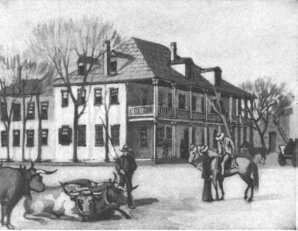
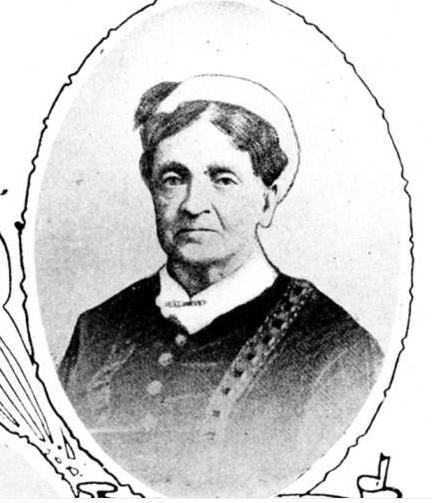 When Augustus Chapman Allen and
When Augustus Chapman Allen and
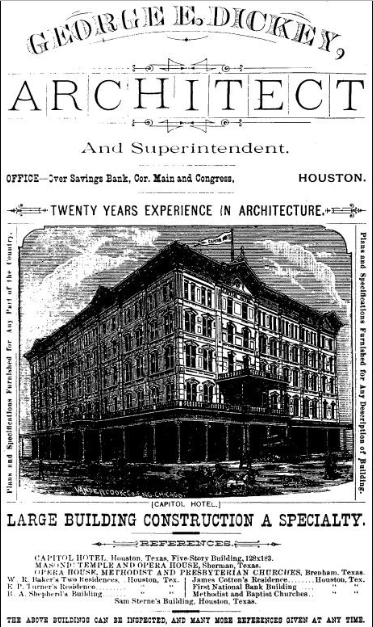
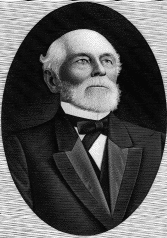 Abraham Groesbeck razed the original building and constructed a five-story Victorian hotel in 1881. The building, then known as the ''Capitol Hotel'', was designed by George E. Dickey, and represented his first major commission since relocating to Houston in 1878.
Abraham Groesbeck razed the original building and constructed a five-story Victorian hotel in 1881. The building, then known as the ''Capitol Hotel'', was designed by George E. Dickey, and represented his first major commission since relocating to Houston in 1878.
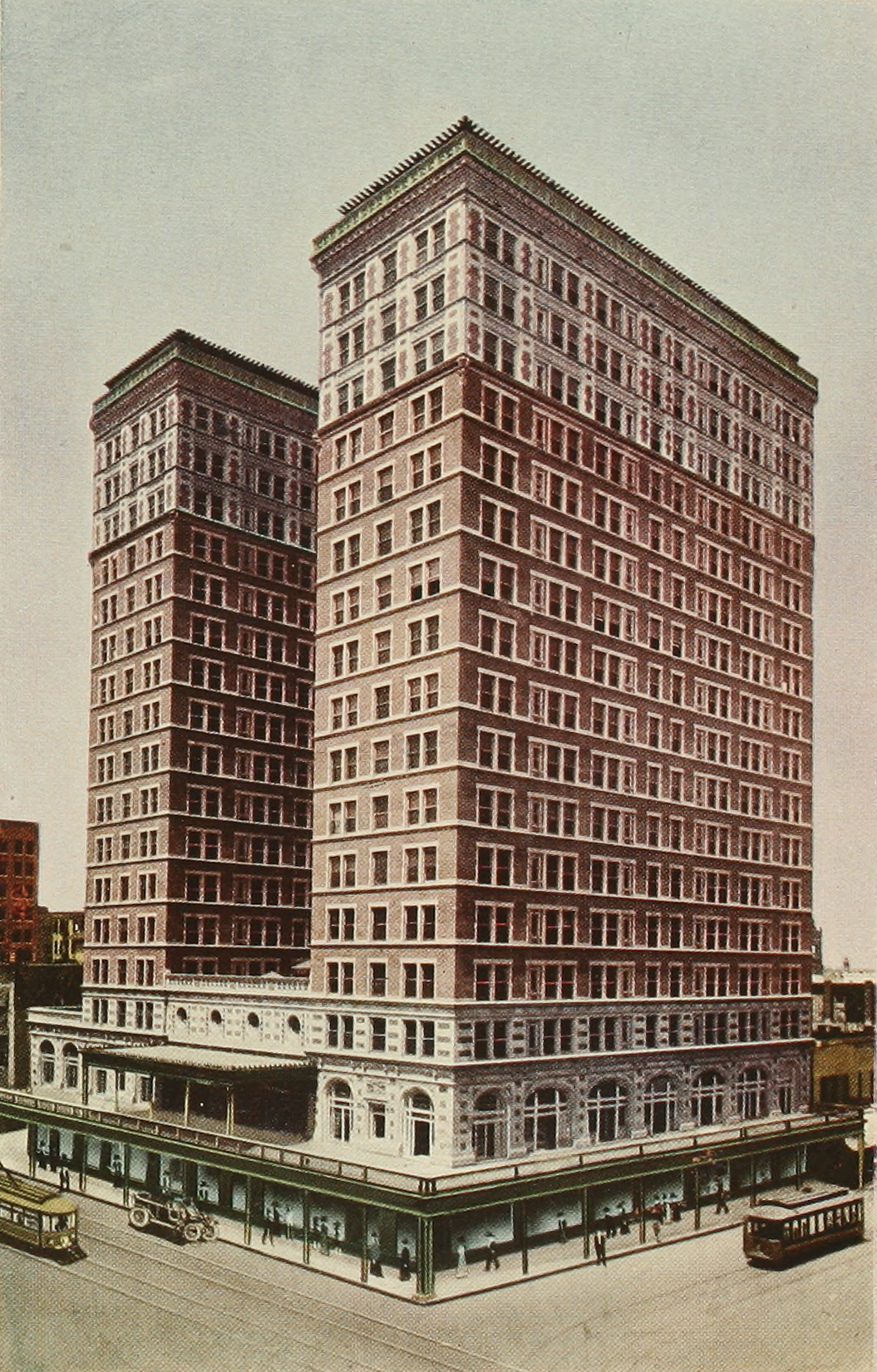
 The hotel had been losing money and its taxes unpaid. Jesse H. Jones offered to lease the land from the Rice Institute and replace the existing hotel through his company, the Houston Hotel Association. Jones obtained a ninety-nine year lease with an option for a ninety-nine year extension. The Rice Institute also invested funds from its endowment to assist Jones in building a new hotel. After demolishing the original Rice Hotel in 1912, Jones hired Mauran, Russell & Crowell to design the new hotel. The new seventeen-story, C-shaped (or U-shaped) hotel opened in May 1913. The hotel featured four restaurants, a banquet room, a small concert hall, and a rooftop deck. The construction cost was about $3.5 million, .
In the first five years, the new Rice Hotel was losing money, but the Houston Hotel Association was able to repay its loans. Jesse Jones continued improving the building. In 1922, he installed air-conditioning in the Rice Hotel Cafeteria, the first for a public room in Houston. In 1924, he expanded the capacity of the cafeteria, but built over a basement pool (it would be discovered and re-opened in the 1998 renovation). In 1925, Jones hired
The hotel had been losing money and its taxes unpaid. Jesse H. Jones offered to lease the land from the Rice Institute and replace the existing hotel through his company, the Houston Hotel Association. Jones obtained a ninety-nine year lease with an option for a ninety-nine year extension. The Rice Institute also invested funds from its endowment to assist Jones in building a new hotel. After demolishing the original Rice Hotel in 1912, Jones hired Mauran, Russell & Crowell to design the new hotel. The new seventeen-story, C-shaped (or U-shaped) hotel opened in May 1913. The hotel featured four restaurants, a banquet room, a small concert hall, and a rooftop deck. The construction cost was about $3.5 million, .
In the first five years, the new Rice Hotel was losing money, but the Houston Hotel Association was able to repay its loans. Jesse Jones continued improving the building. In 1922, he installed air-conditioning in the Rice Hotel Cafeteria, the first for a public room in Houston. In 1924, he expanded the capacity of the cafeteria, but built over a basement pool (it would be discovered and re-opened in the 1998 renovation). In 1925, Jones hired
"
." ''E. O. Smith Middle Attendance Zone
." ''
The Rice official websiteThe Crystal Ballroom at the Rice
at Downtown Houston Through Postcards
Page Southerland Page, Inc./The Rice
{{DEFAULTSORT:Rice, Houston History of Houston Buildings and structures in Houston Hotel buildings completed in 1913 Residential buildings in Houston National Register of Historic Places in Houston 1913 establishments in Texas Hotel buildings on the National Register of Historic Places in Texas Downtown Houston
Houston
Houston (; ) is the most populous city in Texas, the most populous city in the Southern United States, the fourth-most populous city in the United States, and the sixth-most populous city in North America, with a population of 2,304,580 i ...
, Texas
Texas (, ; Spanish: ''Texas'', ''Tejas'') is a state in the South Central region of the United States. At 268,596 square miles (695,662 km2), and with more than 29.1 million residents in 2020, it is the second-largest U.S. state by ...
, United States
The United States of America (U.S.A. or USA), commonly known as the United States (U.S. or US) or America, is a country primarily located in North America. It consists of 50 states, a federal district, five major unincorporated territori ...
. The current building is the third to occupy the site. It was completed in 1913 on the site of the former Capitol building of the Republic of Texas, and is listed on the National Register of Historic Places
The National Register of Historic Places (NRHP) is the United States federal government's official list of districts, sites, buildings, structures and objects deemed worthy of preservation for their historical significance or "great artistic ...
. The old Capitol building was operated as a hotel until it was torn down and replaced by a new hotel around 1881. Jesse H. Jones built a new seventeen-story, double-winged hotel in 1913, also called "The Rice Hotel." This building underwent major expansions: adding a third wing in 1925, adding an eighteenth floor in 1951, and adding a five-story "motor lobby" in 1958. In addition, there were several renovations during its life as a hotel. It continued to operate as a hotel before finally shutting down in 1977. After standing vacant for twenty-one years, The Rice was renovated as apartments and reopened in 1998 as the Post Rice Lofts. It was sold in 2014 and renamed simply The Rice.
Capitol building

 When Augustus Chapman Allen and
When Augustus Chapman Allen and John Kirby Allen
John Kirby Allen (1810 – August 15, 1838), was a co-founder of the city of Houston and a former member of the Republic of Texas House of Representatives. He was born in Canaseraga Village, New York (the present day hamlet of Sullivan in the ...
commissioned the first survey of Houston in the fall of 1836, they made plans to set aside property for use by the Republic of Texas. Eventually they chose property on the south side of Texas Avenue between Travis and Main Street. They also agreed to construct a capitol building for the Texas government, and leased the building on easy terms.
The Republic of Texas used this as its capitol building from 1837 to 1839, and again from 1842 to 1845. In 1841, Mr. M. Norwood leased the building from Augustus Allen, and ran it as the Capitol Hotel. After the Texas government left Houston again, Augustus Allen resumed leasing the building to various hotel operators. Charlotte Allen sold the property to R.S. Blount in 1857. There were various hotel operators between 1857 and 1881 with a few name changes (Houston House and Barnes House). It is not clear how long Charlotte owned the property before it was sold in 1857. John Kirby Allen
John Kirby Allen (1810 – August 15, 1838), was a co-founder of the city of Houston and a former member of the Republic of Texas House of Representatives. He was born in Canaseraga Village, New York (the present day hamlet of Sullivan in the ...
had died in 1838 without a will. After 1843, there was a dispute about his estate, which led to a permanent estrangement between Augustus and Charlotte Allen. Augustus left Houston in 1852.
Anson Jones
Anson Jones (January 20, 1798 – January 09, 1858) was a doctor, businessman, member of Congress, and the fourth and last President of the Republic of Texas.
Early life
Jones was born on January 20, 1798, in Great Barrington, Massach ...
, the last president of the Republic of Texas, committed suicide at the hotel in 1858.
First Rice Hotel building

 Abraham Groesbeck razed the original building and constructed a five-story Victorian hotel in 1881. The building, then known as the ''Capitol Hotel'', was designed by George E. Dickey, and represented his first major commission since relocating to Houston in 1878.
Abraham Groesbeck razed the original building and constructed a five-story Victorian hotel in 1881. The building, then known as the ''Capitol Hotel'', was designed by George E. Dickey, and represented his first major commission since relocating to Houston in 1878.
William Marsh Rice
William Marsh Rice (March 14, 1816 – September 23, 1900) was an American businessman who bequeathed his fortune to found Rice University in Houston, Texas. Rice was murdered by his valet Charles F. Jones while sleeping. The murder was pa ...
bought the hotel after Groesbeck died in 1886. He added a three-story annex. Rice was murdered in 1900, and the hotel property was transferred to the Rice Institute, which he had established in 1891. The Rice Institute trustees renamed it the ''Rice Hotel''.
Jessie H. Jones, who would later redevelop the site, resided at the original Rice Hotel when he first arrived in Houston around 1898. Texas Governor James Hogg maintained a Houston residence there in 1904.
Second Rice Hotel building

 The hotel had been losing money and its taxes unpaid. Jesse H. Jones offered to lease the land from the Rice Institute and replace the existing hotel through his company, the Houston Hotel Association. Jones obtained a ninety-nine year lease with an option for a ninety-nine year extension. The Rice Institute also invested funds from its endowment to assist Jones in building a new hotel. After demolishing the original Rice Hotel in 1912, Jones hired Mauran, Russell & Crowell to design the new hotel. The new seventeen-story, C-shaped (or U-shaped) hotel opened in May 1913. The hotel featured four restaurants, a banquet room, a small concert hall, and a rooftop deck. The construction cost was about $3.5 million, .
In the first five years, the new Rice Hotel was losing money, but the Houston Hotel Association was able to repay its loans. Jesse Jones continued improving the building. In 1922, he installed air-conditioning in the Rice Hotel Cafeteria, the first for a public room in Houston. In 1924, he expanded the capacity of the cafeteria, but built over a basement pool (it would be discovered and re-opened in the 1998 renovation). In 1925, Jones hired
The hotel had been losing money and its taxes unpaid. Jesse H. Jones offered to lease the land from the Rice Institute and replace the existing hotel through his company, the Houston Hotel Association. Jones obtained a ninety-nine year lease with an option for a ninety-nine year extension. The Rice Institute also invested funds from its endowment to assist Jones in building a new hotel. After demolishing the original Rice Hotel in 1912, Jones hired Mauran, Russell & Crowell to design the new hotel. The new seventeen-story, C-shaped (or U-shaped) hotel opened in May 1913. The hotel featured four restaurants, a banquet room, a small concert hall, and a rooftop deck. The construction cost was about $3.5 million, .
In the first five years, the new Rice Hotel was losing money, but the Houston Hotel Association was able to repay its loans. Jesse Jones continued improving the building. In 1922, he installed air-conditioning in the Rice Hotel Cafeteria, the first for a public room in Houston. In 1924, he expanded the capacity of the cafeteria, but built over a basement pool (it would be discovered and re-opened in the 1998 renovation). In 1925, Jones hired Alfred C. Finn
Alfred Charles Finn (July 2, 1883 – June 26, 1964) was an American architect. He started in the profession with no formal training in 1904 as an apprentice for Sanguinet & Staats. He worked in their offices in Dallas, Fort Worth, and Houston. H ...
to design a new wing for the hotel, increasing the number of rooms to over 1,000 and creating the building's current E-shaped configuration. The Crystal Ballroom was air-conditioned in 1928, the same year that Houston hosted the National Democratic Convention. More than preparing the Rice Hotel for convention delegates, Jones lured the Democratic Convention to Houston in the first place, donating $200,000 to the cause, . A famous guest was during the convention was Franklin D. Roosevelt
Franklin Delano Roosevelt (; ; January 30, 1882April 12, 1945), often referred to by his initials FDR, was an American politician and attorney who served as the 32nd president of the United States from 1933 until his death in 1945. As the ...
, the not yet Governor of New York. Jones placed a large shed on the hotel roof before the Democratic Convention to serve as temporary accommodations. This hotel deck was a popular dance venue during the 1930s. National Archives Identifier: 40972376. Slow downloads.
Jones continued investing in the Rice Hotel through the 1930s. The Rice Barber Shop was remodeled in 1930, and a major remodeling of the bottom floors in 1938 coincided with a new, art-deco dining area, the Empire Room. He opened a barber shop in 1930, which remained in business there until about 1977. Five years later, he introduced air-conditioning to the Crystal ballroom, perhaps the first dance venue with such an amenity in Houston. In 1940, Jones embarked on another major remodeling, transforming the cafeteria into the Skyline Room, replete with plastic upholstery and fluorescent lighting. A first among Houston hotels, the Rice installed an escalator in 1946. By 1949, all the guest rooms were air-conditioned. In 1951, Jones hired Staub & Rather to transform the roof deck over the seventeenth floor into an eighteenth floor edition to house the Petroleum Club of Houston.
After Jones died in 1956, the estate conveyed the Rice Hotel building to the Jones family non-profit, the Houston Endowment. The Rice continued to operate as a hotel under the management of the Houston Endowment until 1971. In 1957, Houston Endowment remodeled the Old Capital Club and the Flag Room from the previously existing Empire Room. They commissioned a five-story annex for a motor lobby and a second grand ballroom in 1958. The hotel featured fine dining in the Flag Room, a casual first-floor coffee shop, and the underground Rice Hotel Cafeteria, known for its signature dish, rice pudding. It had a variety of retail shops, including a lobby news stand, a hat store, and Bilton's Fine Jewelry.
In 1962 the Rice Hotel was used for a meeting of NASA Astronaut Group 2 - The New Nine - all of whom booked in with the code name "Max Peck" as portrayed on the 1998 HBO miniseries ''From the Earth to the Moon
''From the Earth to the Moon: A Direct Route in 97 Hours, 20 Minutes'' (french: De la Terre à la Lune, trajet direct en 97 heures 20 minutes) is an 1865 novel by Jules Verne. It tells the story of the Baltimore Gun Club, a post-American Civil W ...
''.
United States President
The president of the United States (POTUS) is the head of state and head of government of the United States of America. The president directs the executive branch of the federal government and is the commander-in-chief of the United Stat ...
John F. Kennedy
John Fitzgerald Kennedy (May 29, 1917 – November 22, 1963), often referred to by his initials JFK and the nickname Jack, was an American politician who served as the 35th president of the United States from 1961 until his assassination ...
visited the Rice Hotel on September 12, 1962, following his speech "We choose to go to the moon" and on November 21, 1963, before traveling to Fort Worth, and then Dallas
Dallas () is the List of municipalities in Texas, third largest city in Texas and the largest city in the Dallas–Fort Worth metroplex, the List of metropolitan statistical areas, fourth-largest metropolitan area in the United States at 7.5 ...
, where he was assassinated. Kennedy used a suite at the Rice Hotel to hold meetings, which was supplied with caviar, champagne, and his favorite beer. After a brief visit at a LULAC
The League of United Latin American Citizens (LULAC) is the largest and oldest Hispanic and Latin-American civil rights organization in the United States. It was established on February 17, 1929, in Corpus Christi, Texas, largely by Hispanics r ...
event and his speech at the Albert Thomas Convention Center, he returned to his suite for a change of clothes. After less than six hours in Houston, he headed to the airport for his flight to Fort Worth. He also delivered his famous speech on religion in politics there to the Greater Houston Ministerial Conference on September 12, 1960. Other notable people who have orated at the Rice are Texas Governor William P. Hobby and Captain James A. Baker of Baker and Botts.
Other notable guests of the Rice Hotel include Groucho Marx and Liberace
Władziu Valentino Liberace (May 16, 1919 – February 4, 1987) was an American pianist, singer, and actor. A child prodigy born in Wisconsin to parents of Italian and Polish origin, he enjoyed a career spanning four decades of concerts, recordi ...
. Notable musicians who have performed at the Rice include Tommy Dorsey
Thomas Francis Dorsey Jr. (November 19, 1905 – November 26, 1956) was an American jazz trombonist, composer, conductor and bandleader of the big band era. He was known as the "Sentimental Gentleman of Swing" because of his smooth-toned trombo ...
, Perry Como, Xavier Cugat
Xavier Cugat (; 1 January 1900 – 27 October 1990) was a Spanish musician and bandleader who spent his formative years in Havana, Cuba. A trained violinist and arranger, he was a leading figure in the spread of Latin music. In New York City ...
, Woody Herman
Woodrow Charles Herman (May 16, 1913 – October 29, 1987) was an American jazz clarinetist, saxophonist, singer, and big band leader. Leading groups called "The Herd", Herman came to prominence in the late 1930s and was active until his dea ...
, Lawrence Welk
Lawrence Welk (March 11, 1903 – May 17, 1992) was an American accordionist, bandleader, and television impresario, who hosted the '' The Lawrence Welk Show'' from 1951 to 1982. His style came to be known as "champagne music" to his radio, te ...
, and a young Illinois Jacquet
Jean-Baptiste "Illinois" Jacquet (October 30, 1922 – July 22, 2004) was an American jazz tenor saxophonist, best remembered for his solo on " Flying Home", critically recognized as the first R&B saxophone solo.
Although he was a pioneer of ...
.
Rice University
William Marsh Rice University (Rice University) is a private research university in Houston, Texas. It is on a 300-acre campus near the Houston Museum District and adjacent to the Texas Medical Center. Rice is ranked among the top universities ...
assumed ownership of the Rice Hotel through a donation from the Houston Endowment. The university had already owned the land since 1900, and the hotel had been operating under a ninety-nine year lease. The hotel ran profitably for a couple of years. However, Rice University estimated compliance to a new 1974 Houston fire code would cost as much as $1.2 million. In December 1974, the university warned that they might demolish the hotel if they could not sell it. Rittenhouse Capital Corporation purchased the property in 1975, and briefly operated as the Rice-Rittenhouse, opening in April 1976 after being closed for remodeling. The hotel closed again in August 1977.
Several entities assumed financial interests in the Rice Hotel after the August 1977 closure. The Rice Preservation Corporation purchased the Rice Hotel property at auction in September 1977. Portfolio Management of Texas bought the property early in 1978 for $3 million, much more than the $542,962 paid at the 1977 foreclosure auction. The new owners secured a listing on the National Register of Historic Places and federal funding to convert the building into apartments. Portfolio Management of Texas did not raise enough capital and did not execute the federal grant. In 1981, Rovi Texas Corporation purchased the property for $7.75 million and announced they would operate it as a luxury hotel. The business plan was based on federal aid of $9.7 million, which was not forthcoming. Rovi Texas allowed its bank, Frankfurt BFG-Bank AG, to assume ownership of the property. The German Bank was asking $15 million to $17 million to sell until they discovered structural problems with the building, leading them to cut their asking price in half.
Restoration
Randall Davis inquired about redeveloping the Rice Hotel property in 1995. He had already rehabilitated old buildings and repurposed them as loft apartments. Three examples are the Dakota Lofts, the Hogg Palace, and the Tribeca Lofts. Michael Stevens, head of the Houston Housing Finance Corporation (HHFC), proposed a public-private partnership, which included $5 million in capital from the Randall Davis investment group with a $5 million matching funds from the City of Houston. However, as cost estimates for the renovation increased, private investors backed out. Stevens developed atax increment financing Tax increment financing (TIF) is a public financing method that is used as a subsidy for redevelopment, infrastructure, and other community-improvement projects in many countries, including the United States. The original intent of a TIF program is ...
(TIF) scheme in which the Rice project would borrow against future tax revenue increases. The City of Houston planned a Tax Increment Reinvestment Zone (TIRZ), placing the Rice within its boundaries. Based on projected tax revenue of $700,000, he coaxed a $6 million loan from Wells Fargo Bank
Wells Fargo & Company is an American multinational financial services company with corporate headquarters in San Francisco, San Francisco, California; operational headquarters in Manhattan; and managerial offices throughout the United St ...
, replacing the $5 million from the Davis group under the original plan. As head of HHFC, Stevens committed another $8 million to the project, $3 million of which would go toward buying the Rice outright. HHFC would recover its investment through selling federal tax credits for restoring historic buildings.
Stevens sold most of the municipal interest in the hotel to Columbus Properties for $4.5 million in cash. Columbus (later renamed Post Properties
Post Properties, Inc. was a publicly traded real estate investment trust headquartered in Atlanta, Georgia that invested in apartments. As of December 31, 2015, the company owned interests in 24,162 apartment units in 61 communities. In 2016, the ...
) also assumed all the municipal debt related to the project, but also gained the tax credits and the ground lease. The city retained ownership of the property, while Davis obtained a forty-year lease.
Davis hired the architectural firm of Page Southerland Page to plan the renovation of the abandoned Rice Hotel. The firm presented Davis with a plan to limit public rooms to the ground floor. Alternatively, the Texas State Historical Association proposed restoring the Crystal Ballroom. Davis decided to model the public area after the 1913 Rice Hotel. This included restoration of the former two-story lobby, the Crystal Ballroom, and the Empire Room. The ground floor reserved 25,000-square feet of retail space, with a wide cast iron awning covering the sidewalks on the Texas Avenue side and part of the Main Street side.
Rice Lofts
Post Properties (renamed from Columbus Properties) opened the Post Rice Loftshttps://www.livetherice.com/history/ for tenants in April 1998. After renovation from 1000 hotel rooms into lofts, the building housed 312 apartments, including some 500-square foot efficiencies, many 1500-square foot apartments, and a few three-story penthouses. Efficiency apartments rented as low as $750 per month. Sambuca, a jazz club, opened in ground floor space at the Post Rice Lofts on October 28, 1998. Sambuca, which was still operating at the same location as of November 19, 2014, announced plans to open a new bar "Lawless" on the second floor. In early 2014, Post Properties listed the Post Rice Lofts for sale, while claiming an apartment occupancy rate of ninety-five percent and an average rental price of $1,700 per month. Later that year, CH Realty/MF Houston Rice VI (Crow Holding Capital Partners) acquired the building from Post Properties and renamed it The Rice. In 2014, Crow Holding Capital Partners announced plans for renovations. The owners hired architectural firm Page to design the renovations. The plan includes installing appliances and remodeling each apartment, and moving a swimming pool and fitness center from the basement to the second floor. Along with new appliances for the apartments, there were plans for remodeling of each kitchen and bathroom. The management company also announced valet service would be offered to tenants. Early in 2014 Post Properties claimed that average rent was almost $1,700 per month and the building had a vacancy rate of about five percent. One person interviewed late in 2014 said his one-bedroom apartment rented for $1,550.Tenants
ThePetroleum Club of Houston
The Petroleum Club of Houston (PCOH) is a private social club located on the 35th floor in the Total Plaza in Downtown Houston. As of November 2014 the club had 1,200 members.Sarnoff, Nancy.Bucks for the memories: Petroleum Club auctions off some ...
, founded in 1946, was originally located in the top area of the Rice Hotel. It moved to the ExxonMobil Building
The ExxonMobil Building (formerly the Humble Building) was built in 1963 in Houston. At that time it was the tallest building west of the Mississippi River at , surpassing the Southland Center in Dallas (the previous record holder). It remained ...
in 1963.
Previously Amy's Ice Creams had its Houston location at the Rice Hotel.
Zoned schools
The Rice Lofts is zoned to theHouston Independent School District
The Houston Independent School District (HISD) is the largest public school system in Texas, and the eighth-largest in the United States. Houston ISD serves as a community school district for most of the city of Houston and several nearby and ...
.
Residents are zoned to Crockett Elementary School, Gregory Lincoln Education Center (for middle school),Gregory Lincoln Middle Attendance Zone"
Houston Independent School District
The Houston Independent School District (HISD) is the largest public school system in Texas, and the eighth-largest in the United States. Houston ISD serves as a community school district for most of the city of Houston and several nearby and ...
. Retrieved on October 24, 2018. and Northside High School (formerly Davis High).
By Spring 2011 Atherton Elementary School and E.O. Smith Education Center were consolidated with a new K-5 campus in the Atherton site.Board Approves School Closings and Consolidations." ''
Houston Independent School District
The Houston Independent School District (HISD) is the largest public school system in Texas, and the eighth-largest in the United States. Houston ISD serves as a community school district for most of the city of Houston and several nearby and ...
''. November 14, 2008. As a result, the building was rezoned from Smith to Gregory Lincoln.." ''
Houston Independent School District
The Houston Independent School District (HISD) is the largest public school system in Texas, and the eighth-largest in the United States. Houston ISD serves as a community school district for most of the city of Houston and several nearby and ...
''. Retrieved on April 7, 2009.See also
*National Register of Historic Places listings in Harris County, Texas
__NOTOC__
This is a list of the National Register of Historic Places in Harris County, Texas. It is intended to be a complete list of properties and districts listed on the National Register of Historic Places in Harris County, Texas, United S ...
References
External links
The Rice official website
at Downtown Houston Through Postcards
Page Southerland Page, Inc./The Rice
{{DEFAULTSORT:Rice, Houston History of Houston Buildings and structures in Houston Hotel buildings completed in 1913 Residential buildings in Houston National Register of Historic Places in Houston 1913 establishments in Texas Hotel buildings on the National Register of Historic Places in Texas Downtown Houston